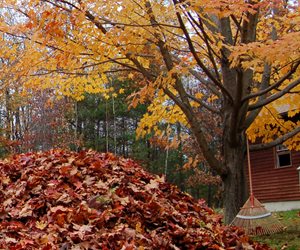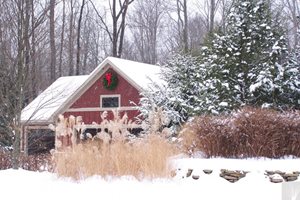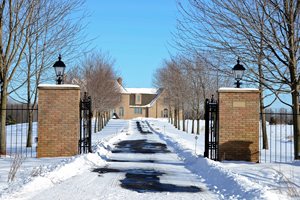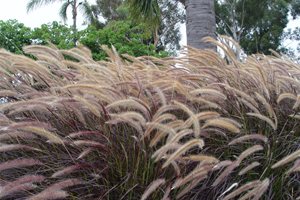Winterizing Lawn and Shrubs
Professional tips for preparing your lawn and other plants for winterHarsh winter conditions can cause a number of issues with your landscaping plants, including broken branches due to snow loading, brown leaves from icy winds, and disease or fungal issues in the lawn. Here, professional landscapers share their tips for protecting your lawn and shrubs from winter damage.
Winterizing lawn
- Fall fertilizing.
Prepare lawn for winter by applying a winterizer fertilizer high in potassium. "We apply zero phosphorus since soil already has a lot of it," says Andrew Morse of Belknap Landscape Co., Inc in Gilford, NH. Phosphorus runoff from lawn fertilizer can pollute waterways, so should be avoided. - Apply lime.
Horticultural lime adjusts the pH of your soil to be more alkaline, which is preferable for lawns. "We lime in fall or winter, because the freeze/ thaw cycle helps the pelletized lime work into the soil," says Joe Markell of Sunrise Landscape and Design in Sterling, VA. - Cut the grass short.
While you should normally mow the lawn to a height of 4 inches, the last mow of the season should be a shorter cut of 2 to 3 inches tall. Morse points out that long grass can flop over and shelter fungal diseases when covered with snow through the winter. - Rake up leaf litter.
For the same reason, it's important to rake up any debris before the first snowfall. Pests and disease can overwinter in leaf litter. - Pick up acorns.
"Acorns are easy to rake up when they first fall, but after a long winter they become embedded in the soil," says Morse. Not only can acorns sprout, but they also make the surface of your lawn bumpy.
- Pro Tip: Don't walk, drive, or run the mower on a frosty lawn. "When the blades of grass are frozen, it's almost like glass and can be easily shattered," says Morse. Of course, once you have a protective layer of snowfall over the lawn to act as insulation, you can walk across it again.
Winterizing shrubs
- Wrap delicate shrubs.
Shrubs that have brittle wood, floppy branches, or leaves that are easily damaged by drying winds should be wrapped with a breathable fabric at the beginning of winter. Burlap is inexpensive and effective, or there are gray or black breathable fabrics with a less bulky profile. - Wrap hedges.
If you have a line of shrubs that all need protection, you can either wrap the entire hedge, or Morse suggests creating a windbreak from stakes and a length of fabric to protect the side most likely to be damaged by wind. "It's a lot easier than wrapping 20 individual boxwoods," says Morse. - Create a snow fence.
"On certain properties, the wind comes off the lake and blows snow up towards the landscape," says Morse. A snow fence keeps the snow on a bank at the edge of the landscape rather than allowing the snow to come in and cover the shrubs. - Protect plants from deer.
"Deer start hammering landscapes when their forage dies down," says Markell. Use deer netting, fencing, or spray-on deer repellents to encourage them to dine elsewhere. - Build teepee structures.
Some plants may get more than their fair share of snow load. "We build wooden structures or teepees for brittle plants under the eave lines," says Morse. These semi-permanent structures keep the snow from breaking branches. - Use an anti-desiccant.
Products such as Wilt-Pruf or TransFilm can be sprayed on the leaf surface of rhododendrons or conifers for protection. "They coat the leaves so the wind can't draw moisture out of the foliage," says Morse. "It's like a jacket for the plants." Morse applies in November or December, then again during the January thaw.

 Backyards
Backyards
 Front Yards
Front Yards






